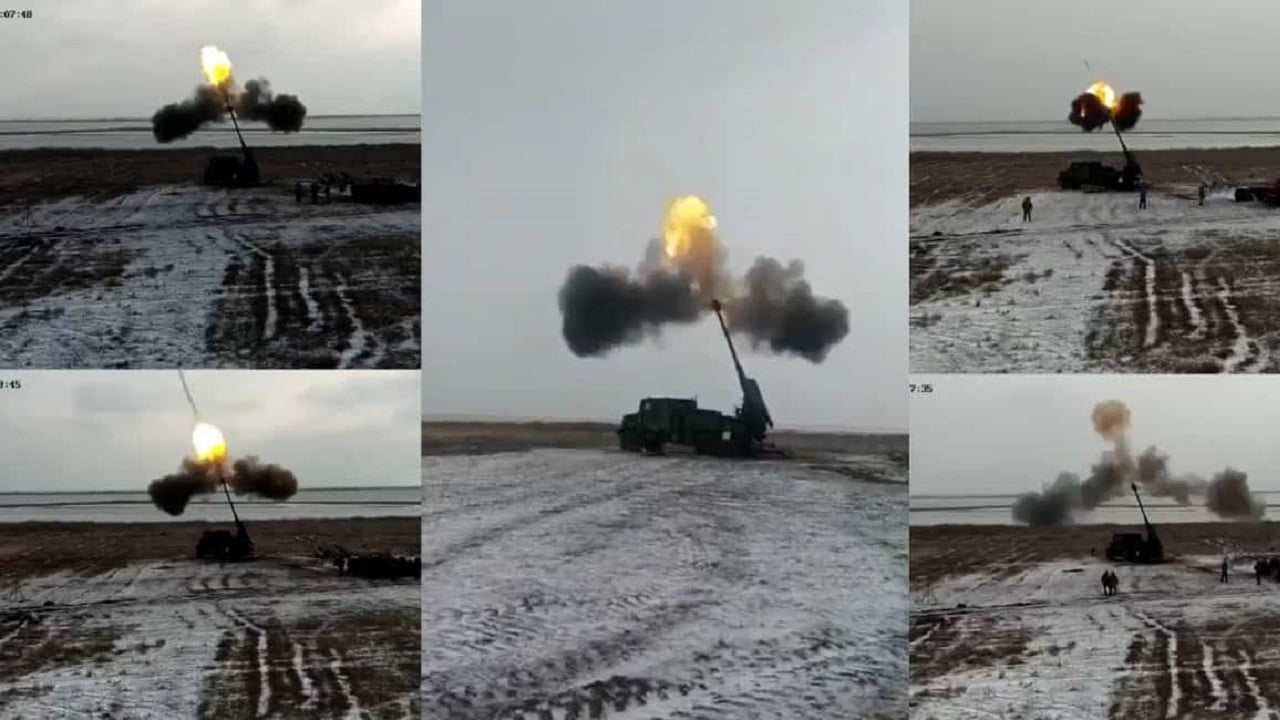Ukraine’s 2S22 Bohdana howitzers used against Russian troops – One of the most notorious battles that have occurred during Russia’s ongoing invasion of Ukraine is the attack on Snake Island. On the first day of Moscow’s offensive, Russian forces began their military occupation of the rocky island off the southern coast of Ukraine. This event became a symbol of Ukraine’s resistance when audio of the attack leaked, conveying a Ukrainian soldier telling the incoming Russian troops to “go f*** themselves.”
While the Snake Island event widely circulated, the weapon that actually served to repel Russian troops is hardly discussed, in part due to its rarity. Ukraine’s 2S22 truck-mounted howitzer was used to drive off the invading forces, clearly one of the most unique in Kyiv’s arsenal. Fully designed and produced in Ukraine, the 2S22 Bohdana is one of the several domestically-made weapons used by Ukrainian armed forces to counter Russia’s offensives.
2S22 Bohdana, Explained
The self-propelled howitzer was initially debuted during a military parade in 2018. Ukraine’s Kramatorsk Heavy Machinery Plant built the weapon, which has a major advantage over the army’s remaining Soviet-era artillery. Significantly, the 2S22 can fire NATO-standard 155-millimeter shells. This makes the weapon more formidable as it can fire foreign ammunition and does not solely depend on Soviet-standard 122-millimeter shells like the rest of Ukraine’s artillery arsenal. Since Ukraine is constantly being barraged with aerial and ground attacks at the hands of Russian forces, its domestic industries have struggled. Production issues have specifically impacted factories, which has limited the supply of Soviet calibers. However, the international community largely supports Ukraine’s defensive resistance to the Russians and at least a dozen countries have delivered NATO-calibers to the country since the onset of the war.
Designed to destroy artillery batteries, field fortifications and command and communication posts, the howitzer has become an instrumental tool for Ukraine’s forces. The 2S22 comprises a NATO-standard cannon which mounted at the rear of the vehicle, able to fire at a range of approximately 35-40 kilometers away. The Bohdana also hosts an advanced fire control system, equipped with main gun stabilization and a ballistic calculator. The weapon can host up to five crew members and holds enough storage capacity to lug around 20 shells.
The weapon is made from Ukrainian steel and possesses enhanced mobility, precision and firing speeds.
2S22 Bohdana Was Almost Destroyed
One month before Russia’s initial invasion, Ukraine conducted preliminary firing tests of the 2S22 Bohdana at the Alibey State testing ground in Odesa. Originally, the Minister of Defense ordered the weapon to be destroyed in late February, concerned that Russian forces could repurpose the howitzer. However, the Ukrainian forces were able to safeguard its indigenous creation.
Although Moscow attributes its defeat in Snake Island to its “goodwill,” the 2S22 Bohdana played a decisive role in the outcome of the battle. Ukraine’s Defense Ministry released an official video of this incident, depicting the howitzer firing on Russian forces on the island. Following the barrage, the Russian forces reportedly fled the scene.
As Russia’s invasion continues, more of Ukraine’s domestically-produced capabilities are likely to enter the battle space.
Maya Carlin is a Middle East Defense Editor with 19FortyFive. She is also an analyst with the Center for Security Policy and a former Anna Sobol Levy Fellow at IDC Herzliya in Israel. She has by-lines in many publications, including The National Interest, Jerusalem Post, and Times of Israel.

